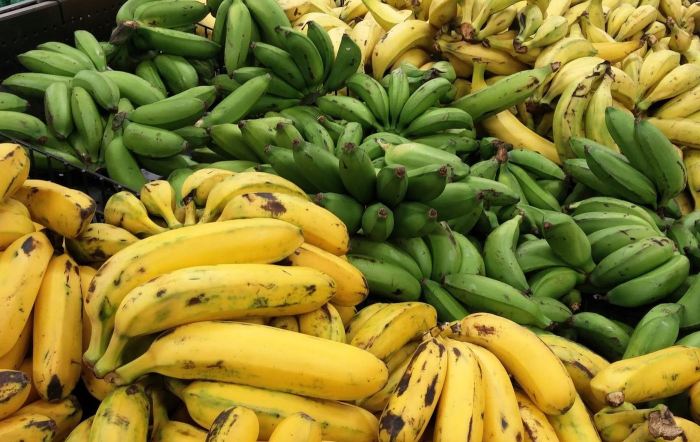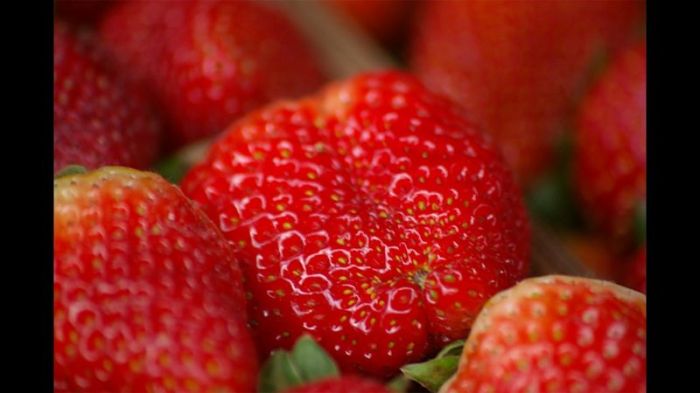Embark on a delectable journey through the vibrant world of frutas de américa del sur, where nature’s bounty unfolds in a symphony of flavors and cultural significance.
From the sun-kissed shores of Brazil to the Andean highlands of Peru, South America is a cornucopia of exotic and delectable fruits that have captivated the hearts and palates of people worldwide.
Fruit Diversity in South America

South America is renowned for its remarkable biodiversity, and its fruits are no exception. The continent is home to a vast array of indigenous fruits, each with its unique characteristics, flavors, and nutritional value.
Frutas de américa del sur, like papaya and mango, are known for their vibrant colors and sweet flavors. If you’re studying grammar, understanding the types of syntax ap lang can help you write more effectively. Remember, the correct use of syntax ensures clarity in communication, just like the distinct characteristics of each fruta de américa del sur contribute to their unique appeal.
The diversity of South American fruits can be attributed to the region’s varied climates and ecosystems, ranging from tropical rainforests to temperate grasslands. These diverse conditions have fostered the evolution of a wide range of fruit species, each adapted to its specific environment.
Fruits of the Amazon Rainforest
The Amazon rainforest, the largest rainforest in the world, is home to an astonishing variety of fruits. Some of the most well-known Amazonian fruits include:
- Acai berries:These small, dark purple berries are packed with antioxidants and are often used in juices and smoothies.
- Guava:A tropical fruit with a sweet and tangy flavor, guava is rich in vitamin C and fiber.
- Passion fruit:This exotic fruit has a sweet and tart flavor and is a good source of vitamins A and C.
- Cupuaçu:A large, chocolate-colored fruit, cupuaçu has a sweet and creamy flavor and is used to make juices, ice cream, and other desserts.
Cultural Significance of South American Fruits

Fruits hold a deep cultural significance in South America, playing an integral role in cuisine, traditions, and festivals. Throughout history, they have been a vital source of sustenance, nourishment, and medicinal benefits.
Incorporation into Local Cuisine
South American cuisine is renowned for its vibrant flavors and diverse use of fruits. Fruits are incorporated into a wide array of dishes, from savory to sweet. They are used as ingredients in stews, soups, and salads, adding a burst of freshness and flavor.
Fruits are also commonly used in beverages, such as juices, smoothies, and cocktails, providing a refreshing and nutritious drink.
Traditional Medicine and Healing Practices
In traditional South American medicine, fruits have been used for centuries for their medicinal properties. Many fruits contain high levels of vitamins, minerals, and antioxidants, which can help prevent and treat a variety of ailments. For example, guava is known for its anti-inflammatory properties, while passion fruit is believed to have calming and sedative effects.
Economic Importance of South American Fruits: Frutas De América Del Sur

Fruit production in South America plays a significant role in the region’s economy, contributing to export revenue, job creation, and food security. Major export markets include the United States, Europe, and Asia.
Key Players and Organizations
The fruit industry in South America is supported by a network of key players and organizations, including:
- Growers and farmers
- Cooperatives and associations
- Distributors and exporters
- Government agencies
- Research institutions
Environmental Impact of Fruit Production

Fruit production in South America has significant environmental implications. Extensive farming practices can lead to deforestation, water depletion, and excessive pesticide use, impacting ecosystems and biodiversity.
However, sustainable farming practices are emerging to mitigate these concerns. Agroforestry and integrated farming systems promote ecological balance and reduce the industry’s environmental footprint.
Deforestation
- Fruit plantations often require vast areas of land, leading to deforestation.
- Clearing forests disrupts ecosystems, reduces biodiversity, and releases carbon dioxide.
Water Usage
- Fruit cultivation requires substantial water for irrigation.
- Over-extraction can deplete water sources, affecting local communities and ecosystems.
Pesticide Use
- Pesticides are used to protect crops from pests and diseases.
- Excessive pesticide use can contaminate soil, water, and air, harming wildlife and human health.
Sustainable Farming Practices
- Agroforestry combines fruit production with tree planting, enhancing biodiversity and soil health.
- Integrated farming systems incorporate livestock and crop cultivation, reducing chemical inputs and promoting nutrient cycling.
Future of South American Fruit Production
The future of South American fruit production holds immense potential for innovation and growth. Emerging trends, such as the development of new fruit varieties, advancements in cultivation techniques, and expanding market opportunities, are shaping the industry’s landscape.
Mechanization, automation, and technology adoption are transforming the way fruits are produced, processed, and distributed. These technologies promise increased efficiency, reduced labor costs, and improved product quality.
Role of Research and Development, Frutas de américa del sur
Research and development play a pivotal role in driving innovation and sustainability in South American fruit production. Scientists are working on developing disease-resistant varieties, optimizing cultivation practices, and exploring alternative pest management strategies.
- Genetic engineering techniques are being used to create fruit varieties with desirable traits, such as enhanced nutritional value, longer shelf life, and resistance to pests and diseases.
- Precision agriculture technologies, such as drones and sensors, are providing real-time data on crop health, enabling farmers to make informed decisions about irrigation, fertilization, and pest control.
- Sustainable practices, such as organic farming and integrated pest management, are gaining traction as consumers become more environmentally conscious.
FAQ Guide
What are some of the most popular frutas de américa del sur?
The list is endless, but some of the most renowned include açai, passion fruit, guava, mango, and pineapple.
How are frutas de américa del sur used in local cuisine?
They are incorporated into a wide range of dishes, from savory stews to refreshing beverages and decadent desserts.
What is the economic significance of fruit production in South America?
It is a major industry, generating billions of dollars in revenue and providing employment for millions of people.